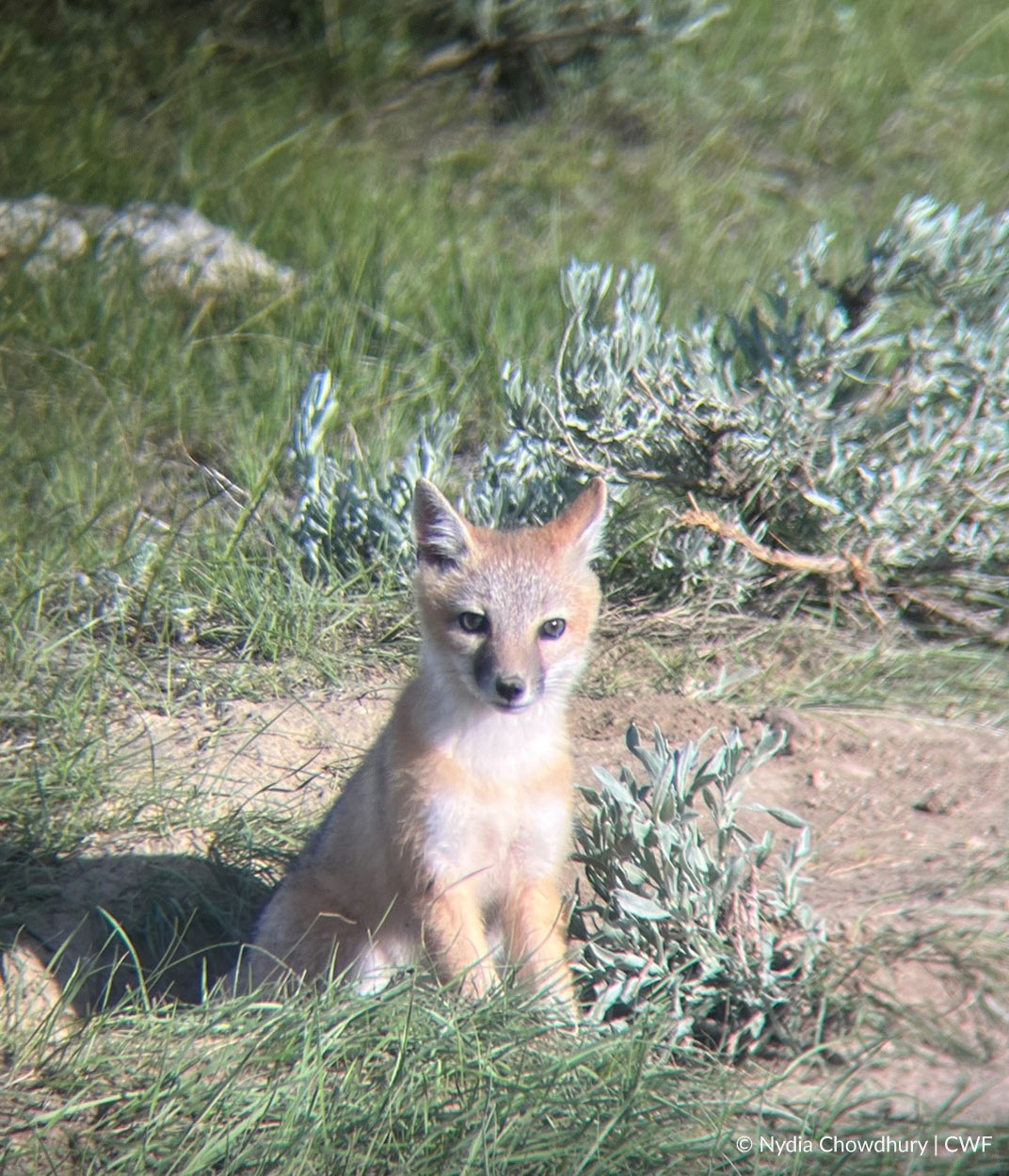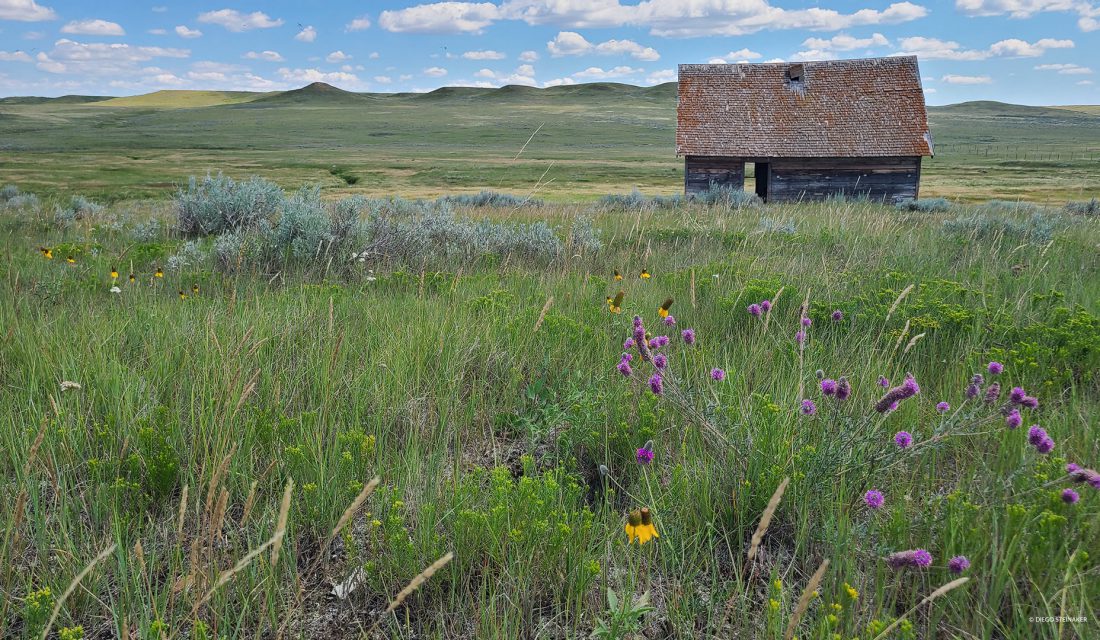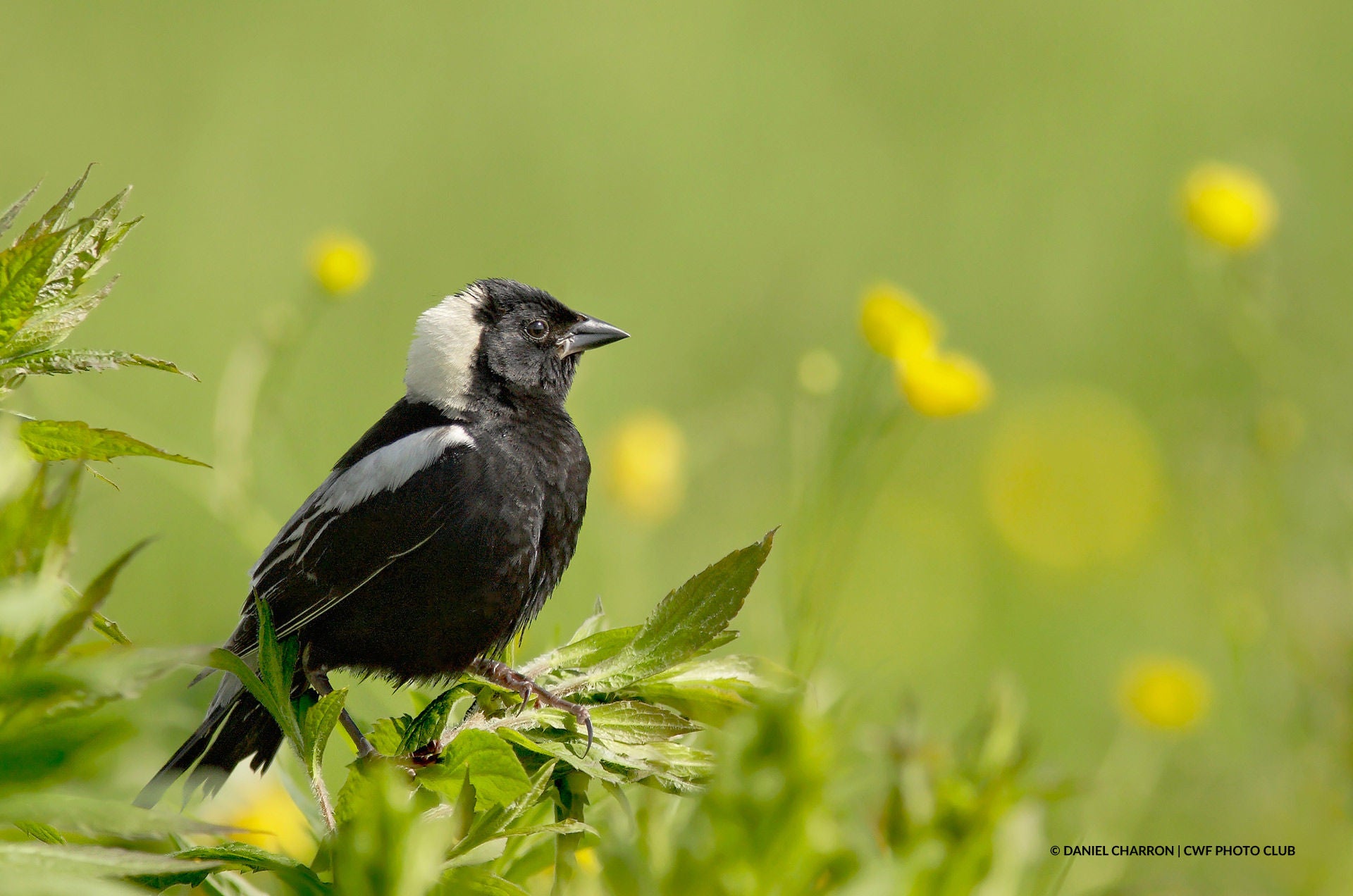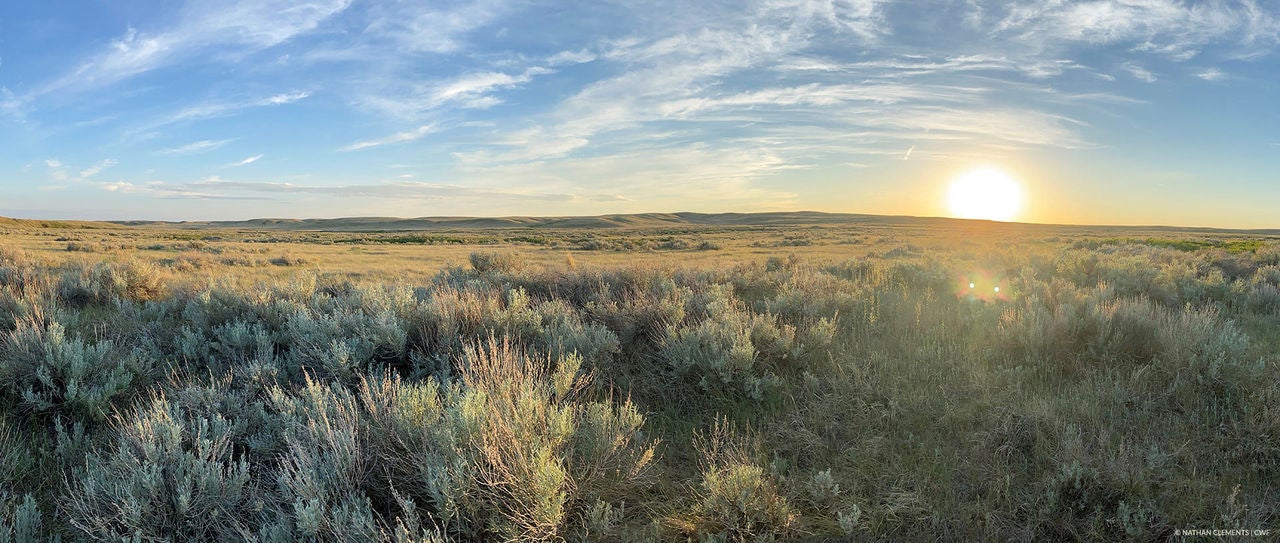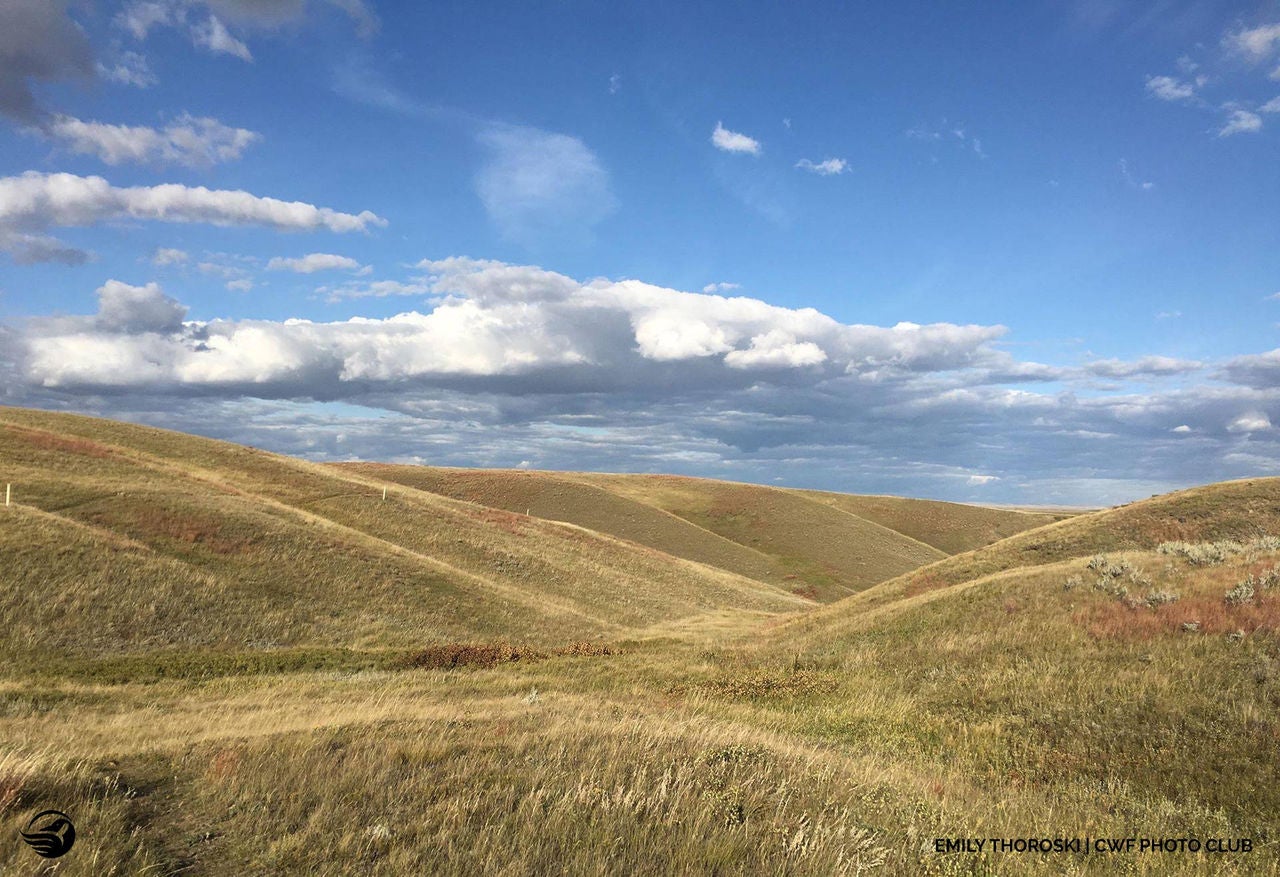Leaving a Legacy
The families that raise beef cattle play an integral role in protecting grassland species and their habitat. Sustainable farms and ranches manage native prairie not only as a source of income for their families, and for their families’ future, but for biodiversity. It’s not easy. The increase in market demand for annual crops puts pressure on remaining native grasslands. Raising beef cattle has become less profitable, and yet ranchers continue to provide the public with many benefits: grassland ecosystems that support species at risk, the majority of wildlife habitat on agricultural land, carbon storage, and a thriving ecosystem. It is hard to overstate how difficult the sustainability balance is; to run a viable operation while providing the long-term foundation for a common good — healthy and diverse native grasslands that provide for all Canadians.
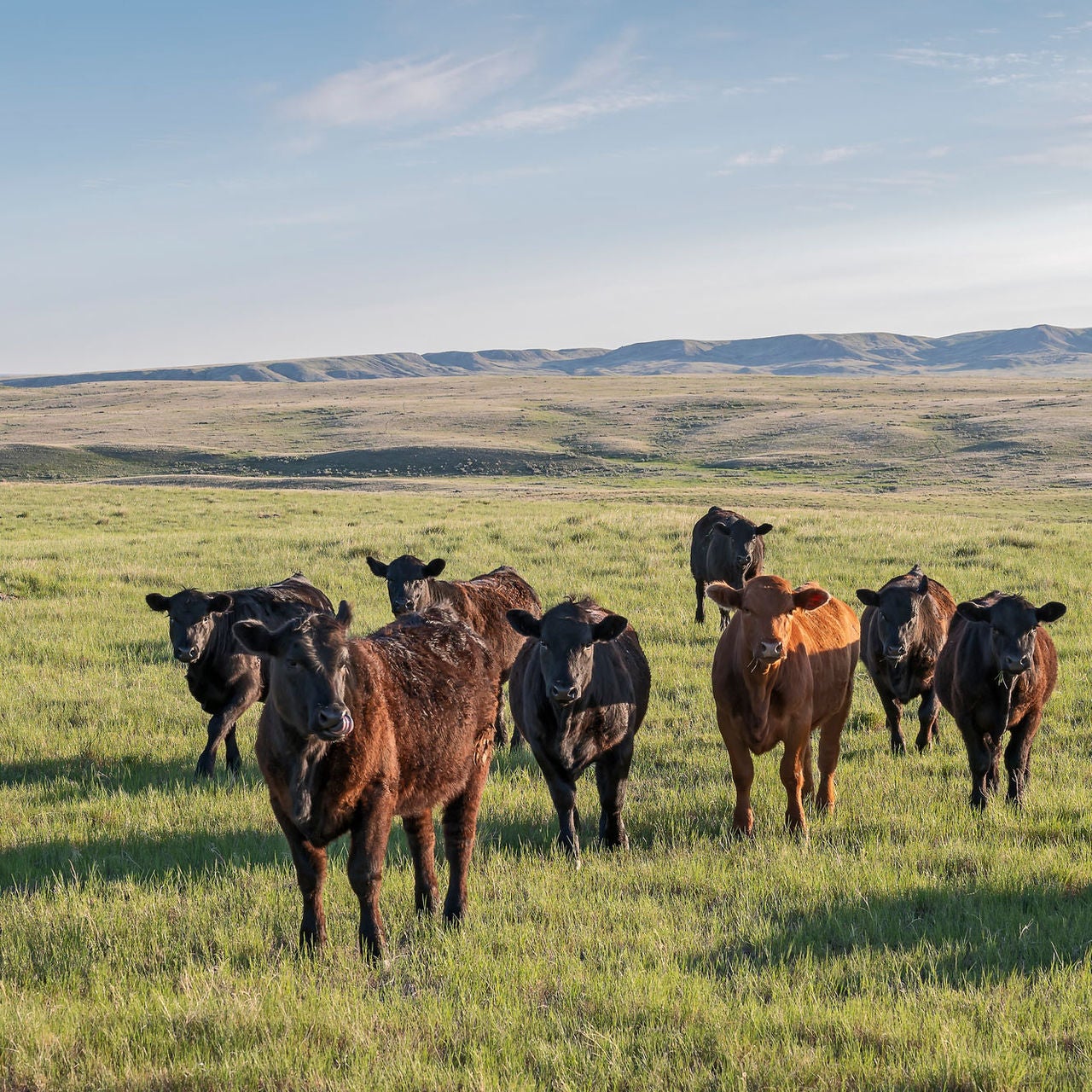
Swift Fox © Nydia Chowdhury
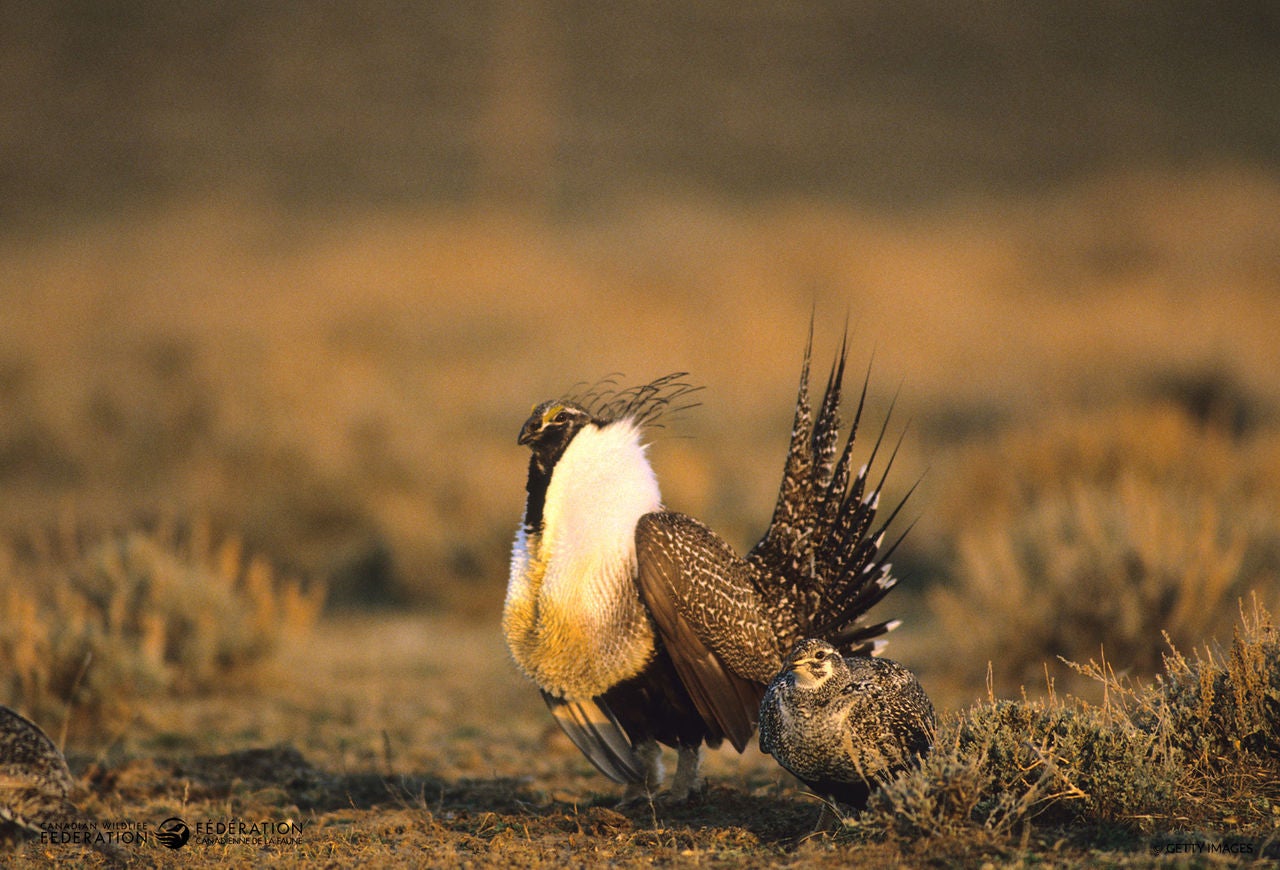
Sage Grouse, male and female © Getty Images
The Cattle Controversy
Amid a growing climate crisis and unprecedented biodiversity loss, many people are questioning whether eating beef is the right environmental choice. Cattle produce methane and are part of a global livestock sector—including pigs, chickens, sheep and goats—that contributes about 14.5 per cent of human-induced greenhouse gas emissions to the atmosphere. This, along with the industry’s use of food and water resources and the impact of cattle operations on the environment, has given the beef industry a bad reputation.
Yet the relationship between cattle ranching, biodiversity and climate change is more nuanced. Cattle are raised differently from nation to nation. No matter how cattle are finished in Canada, they all spend at least 80 per cent of their lives grazing on grasslands and pastureland. Only 2.4 per cent of our national greenhouse gas emissions come from raising beef cattle, and these numbers are continually improving with new technologies and beneficial management practices.
Moreover, grasslands store carbon in the soil to a greater degree than any other crop. Grasslands managed with cattle store approximately 1.5 billion tonnes of carbon, more than any other agriculture land. If cattle were to be replaced with annual crops, 30 to 50 per cent of the carbon that has been stored by grasslands soil would escape into the atmosphere.
Some of the most endangered animals in Canada live on the native grasslands and cattle ranches. When these ranches are put out of business, native grasslands are often lost as is the wildlife that depends on it. Guardians of the Grasslands, a group of ranchers dedicated to preserving ranching on native grasslands, estimate that 5 million acres of native grasslands and tame pastures were converted to cropland and other development when 26,000 family farms stopped ranching during the cattle prion disease crisis of 2003. Once native grasslands are tilled, millions of tonnes of carbon stored beneath the soil are released to the atmosphere.
Protecting what’s left of our quickly vanishing grasslands will require the ability of multiple sectors to work together. Ranchers manage large tracts of the Canadian prairies, playing a key role in protecting many of the species teetering on the brink of extinction.
Videos
How Cattle Grazing Helps Grasslands
Grasslands Require Grazing
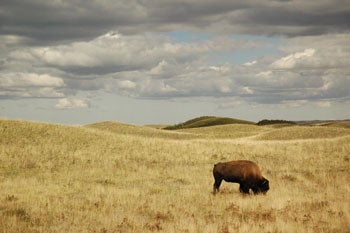
- Plains Bison were once 30 to 60 million strong in North America. They moved constantly in great migrations across the heart of the continent, shaping the ecosystem as they went. Bison left short grasses in their wake, but also skipped large areas of grassland, providing ground nesting birds and other wildlife with a mosaic of habitats. Grazing also created a landscape mosaic that maximized the diversity of plants and wildlife. Some plants even rely upon grazing to clear old grass away to make way for new shoots.
Cattle grazing helps maintain and restore grasslands and biodiversity
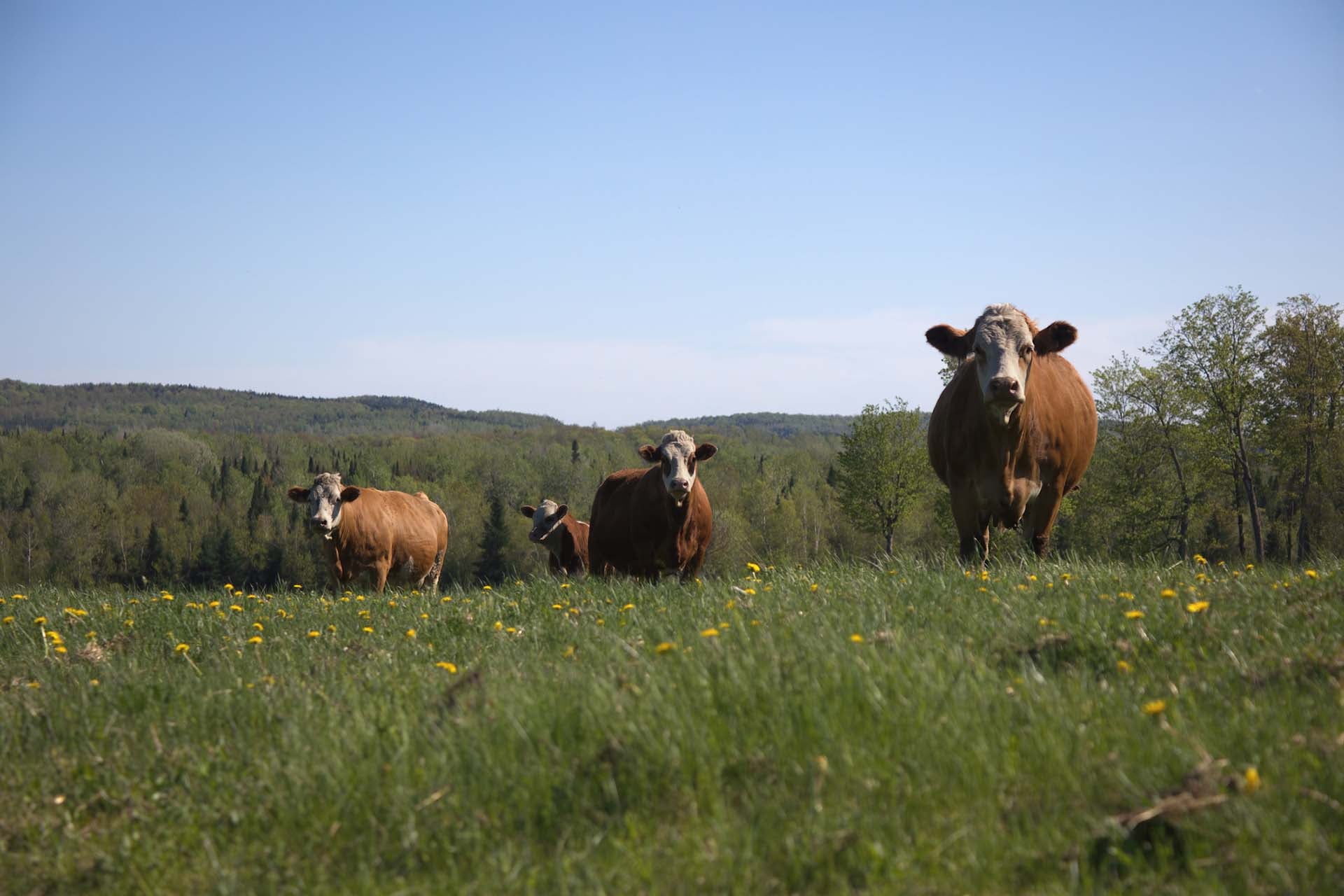
- Cattle are not a perfect replacement for bison. But with careful management, cattle can graze native grasslands in a way that benefits native grasslands and wildlife just as bison grazing did.
In sustainable ranching operations, this planning is done through the thoughtful development of grazing management plans that balance forage yield, animal health and productivity, pasture recovery times and biodiversity protection. Ranchers manage how many animals are on the land and move them in a pattern that mimics historic patterns of bison grazing.
Case Study: Ranchers’ perspectives on a successful incentive program
Cattle ranchers in the Milk River watershed, Saskatchewan, participated in a federally funded program by taking voluntary actions to support rangeland sustainability, habitat conservation and recovery of species at risk. The study took place in an area covered by the South of the Divide Conservation Action Program (SODCAP), the organization that helped implement the project locally. Roughly 46 per cent of the land in the study area is privately-owned by about 750 farms. At the time, native prairie provided about 50 per cent of the food for 130,000 cattle.
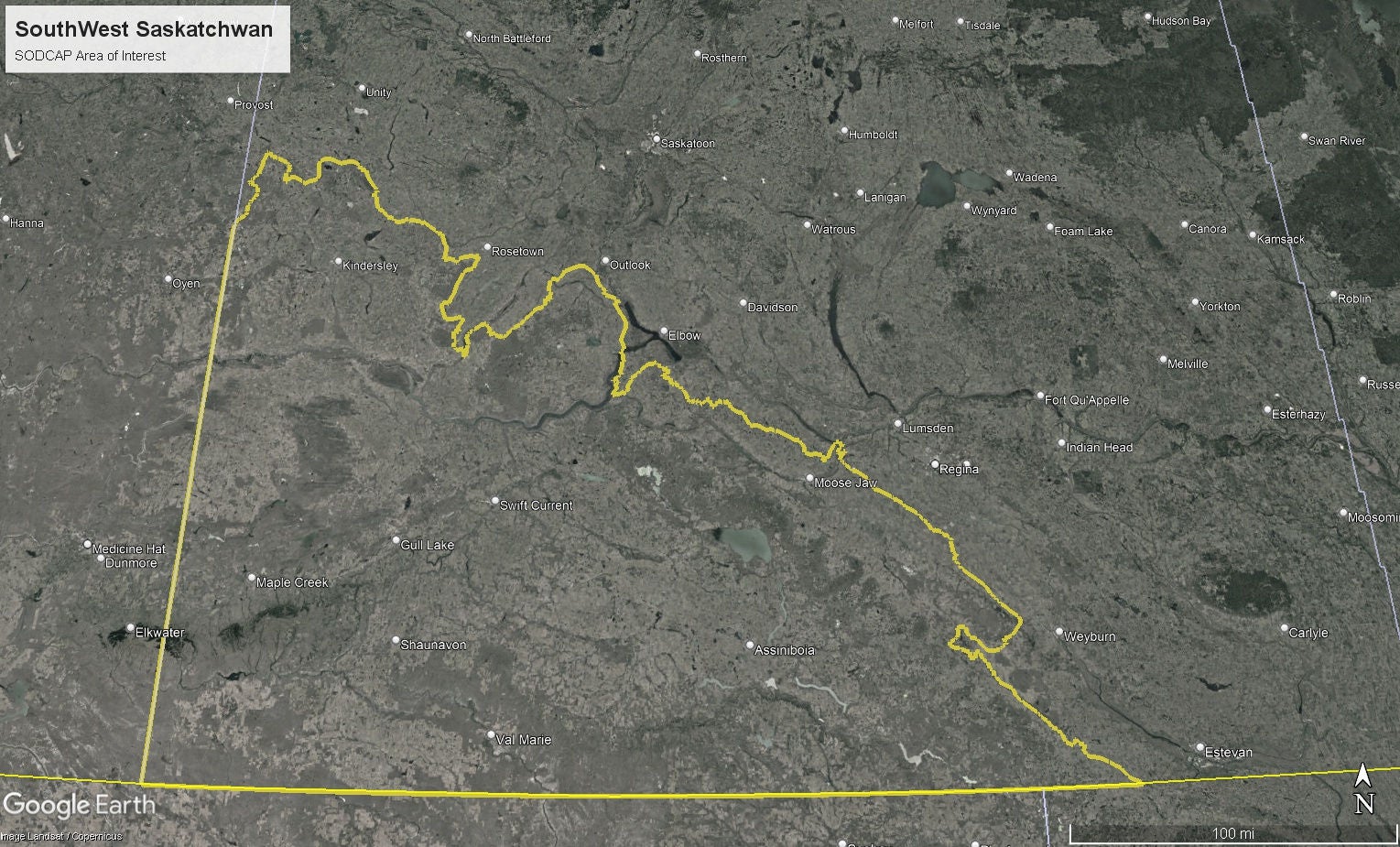
We need programs that support ranchers
Sustainable ranching comes at a cost
- Ranching with the goal of protecting biodiversity often means fewer cattle on the land, more intensive management, and letting some areas rest. It’s all about how the grass is managed, and this can all add up to less income in the short-term. However, Canadian agricultural policy has historically rewarded ranchers and farmers that convert native grasslands and wetlands to cropland through vehicles such as income stabilization programs. Though cattle and crop producers are rarely recognized for protecting ecosystem services that prevent soil erosion and help retain water, they can easily qualify for subsidies when hit by droughts and floods. Canada needs programs that recognize the good stewardship ranchers have practiced for generations.
Incentive Programs
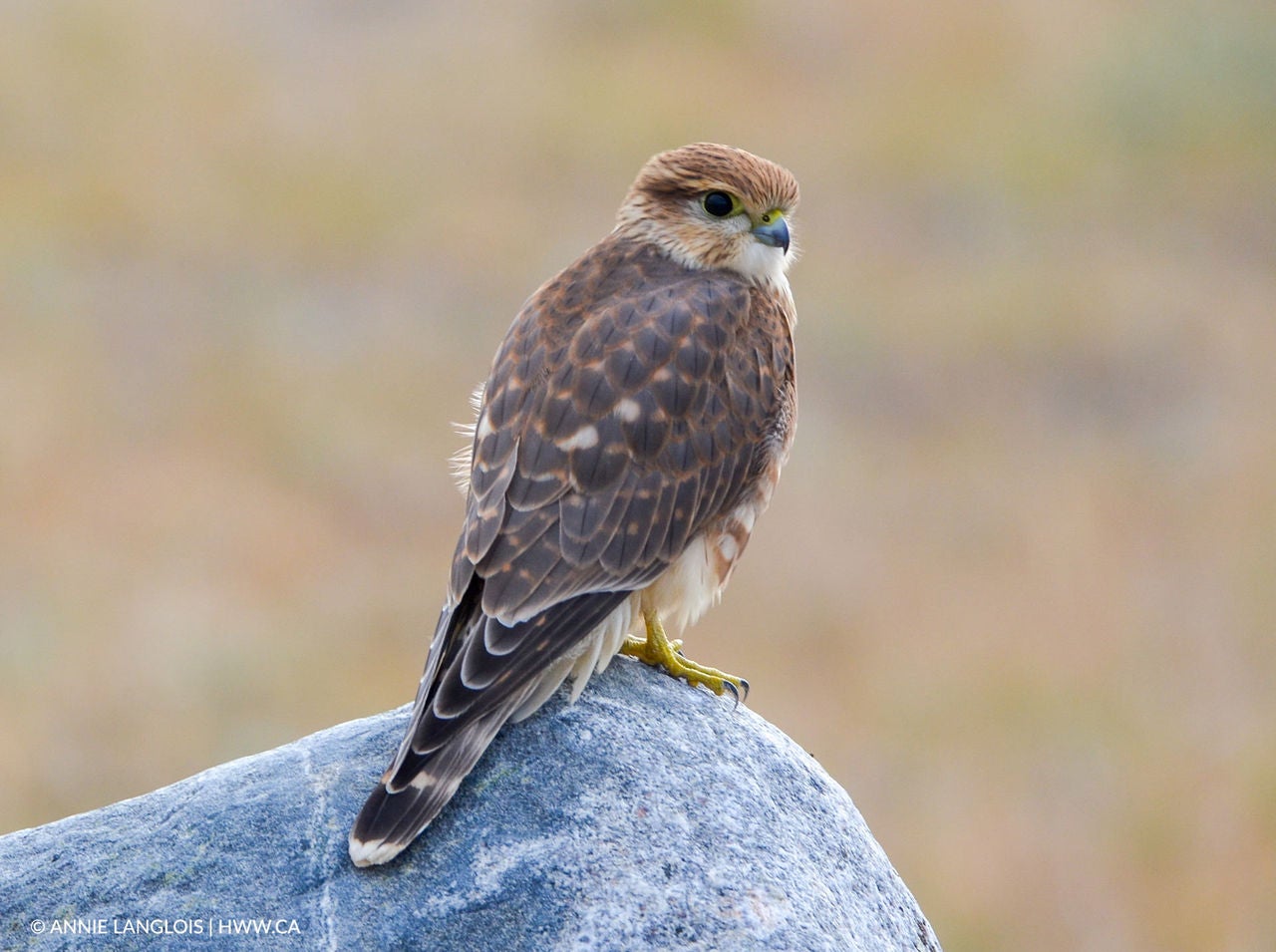
- Native rangelands are biodiversity and carbon storage powerhouses. They are a natural solution to climate change, flood mitigation and global biodiversity loss. These public services are almost entirely paid for privately — by ranching families that have stewarded these places for generations. Yet, there is great pressure to convert native grasslands to monoculture crops for a better financial return for their families. Something all families do. We believe that there is a way to remove this pressure on ranching families that will keep native grasslands intact, conserving biodiversity and maintaining invaluable ecosystem services. Conservation agreements and easements are effective programs that pay ranching families to keep native grasslands native — removing the pressure to break the land. They come in the form of tax incentives and payments for ecosystem services in return for a long-term agreement to conserve native habitat. But, they require federal government support. If we want ranching families to steward and protect native grasslands that serve all Canadians, we need Canadians to return the favour.
In the News
Help Us Conserve Native Grasslands
Invest in research that supports grassland conservation on ranch lands by supporting the Canadian Wildlife Federation. Our work is collaborative with ranchers and measures conservation outcomes of grazing management. Our work on national advisory groups aims to bring greater support for native grasslands in Canada and greater support for the stewards of these lands. Every day we show up to support grasslands.
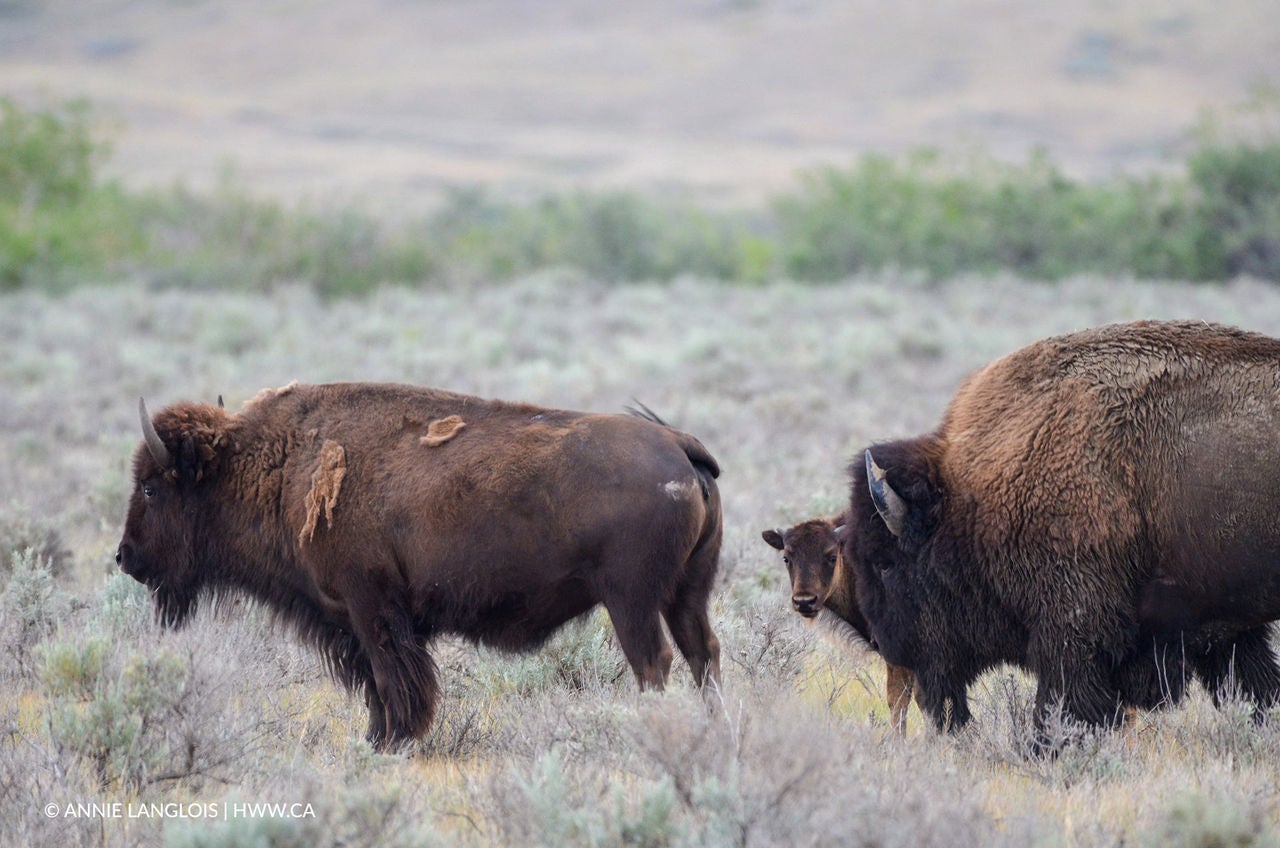
- 0
- 1
- 2
- 3
